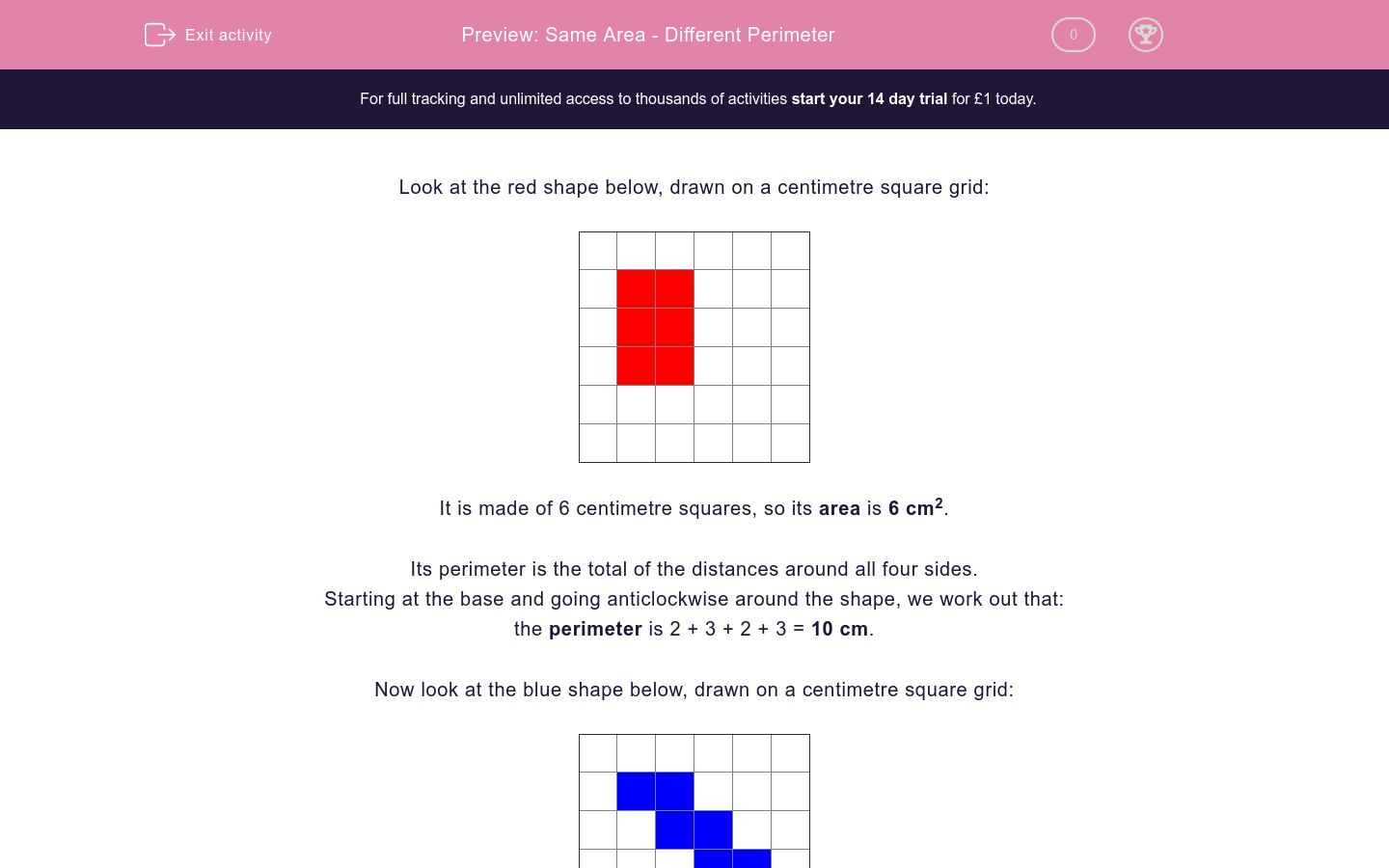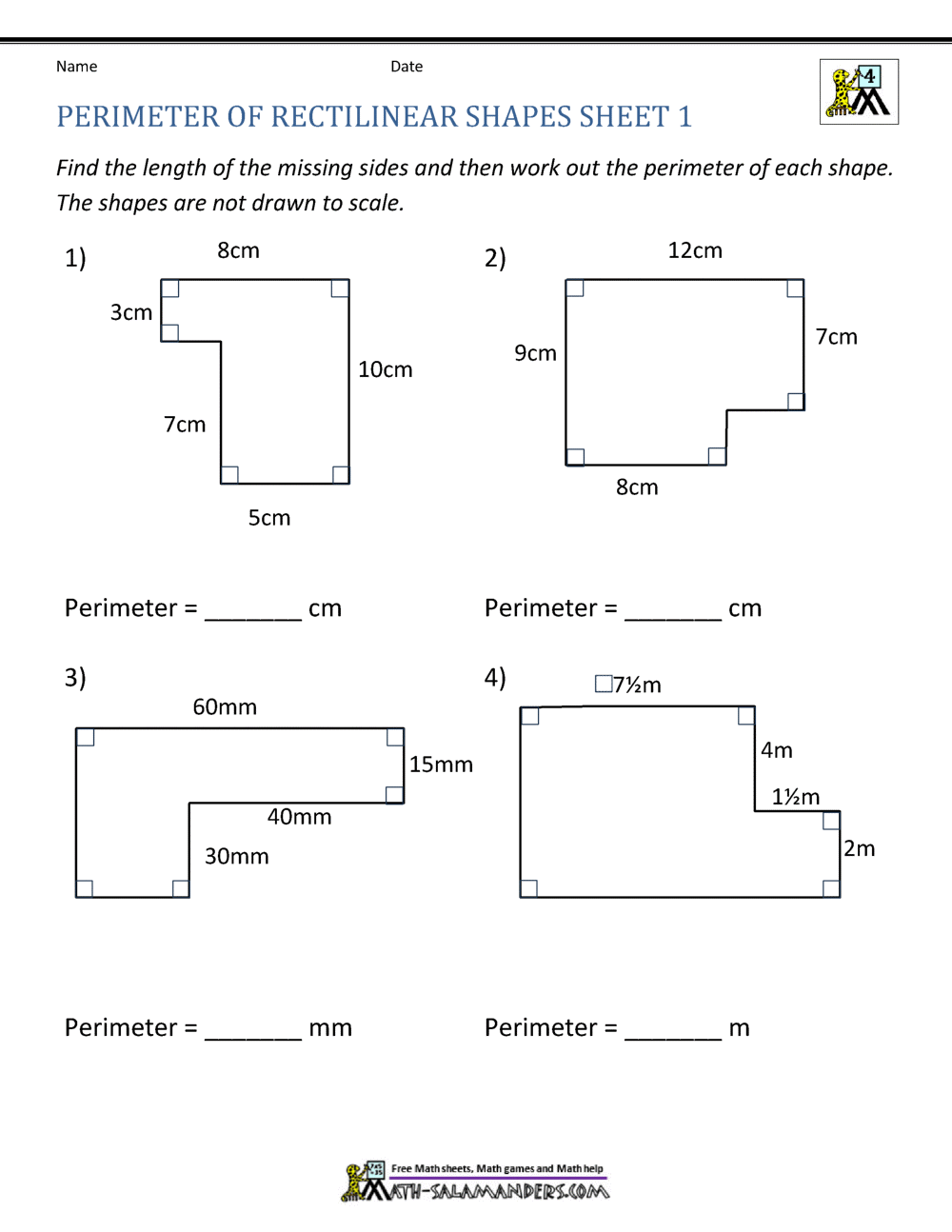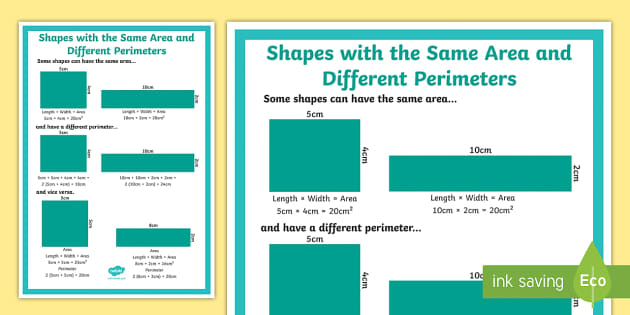
- #DIFFERENT SHAPES WITH THE SAME PERIMETER WORKSHEETS HOW TO#
- #DIFFERENT SHAPES WITH THE SAME PERIMETER WORKSHEETS SERIES#
Problem 2 : The perimeter of a rectangle is 42 cm. If its width is 3 more than twice its length, then find its length and with. Once they have done this, discuss: are they surprised that they only found one other possible perimeter, and that the two answers could be reached in several different ways? Solution: Let x be the length of the rectangle. The next challenge is to make different shapes using at least two of the rectangles, and again work out the area and perimeter. Students could make a shape in pairs and work out the area and perimeter to give to another pair (without letting them see the shape), to see if they can create a shape with the same area and perimeter. There is opportunity for fruitful discussion when the two Learn to find area of different shapes like circle, square, rectange, parallelogram and triangle with math area worksheets for kids.
#DIFFERENT SHAPES WITH THE SAME PERIMETER WORKSHEETS HOW TO#
#Expressions representing perimeter and area worksheets how to#Īfter students have learned how to find the area of different shapes then they can practice these mixed problems of finding areas. Different units of length are used in the problems so that students also learn. Shapes are compared, to see what is the same and what is different, and to see if one can be transformed into the other.Īlternatively, collect together the areas and perimeters on the board. Then in pairs, challenge students to combine rectangles to make each of the area/perimeter combinations listed on the board, checking each other's work as they go along.įinally, the "questions to consider" provide some interesting points for discussion - students could be invited to suggest questions they think mathematicians might ask themselves, with the list in the problem used to prompt ideas if necessary. #Expressions representing perimeter and area worksheets how to#.Related resources include answers to all of the cards and test books and answers. It became a complete individualised scheme based around a network of activity cards and assessments.


#DIFFERENT SHAPES WITH THE SAME PERIMETER WORKSHEETS SERIES#
SMILE (Secondary Mathematics Individualised Learning Experiment) was initially developed as a series of practical activities for secondary school students by practising teachers in the 1970s.

This SMILE resource contains three packs of games, investigations, worksheets and practical activities supporting the teaching and learning of area and perimeter, from calculating area by counting squares to finding the formula for the area of a trapezium.Īrea and Perimeter pack one contains fourteen work cards with a wide variety of activities covering finding areas by counting squares, finding the length of perimeters by counting, developing the formula for the area of a rectangle, drawing different shapes with a given perimeter, finding different shapes with a given area and finding the area of simple compound shapes.Īrea and Perimeter pack two contains eleven work cards with activities requiring students to make shapes of a given size using pentominoes, investigate the area and perimeter of rectangles, find the area of a right-angled triangle, calculate the area of polygons drawn on square dotted paper, investigate different ways of shading half a square, find the area of a triangle, find the area of compound shapes made from rectangles and find the area of a parallelogram.Īrea and Perimeter pack three contains eleven work cards with activities in which students investigate the connections between the area of a parallelogram and the area of a rectangle, the area of obtuse-angled triangles, further parallelogram problems, finding the area of a polygon, finding the area of a trapezium and calculating the area of irregular shapes.


 0 kommentar(er)
0 kommentar(er)
